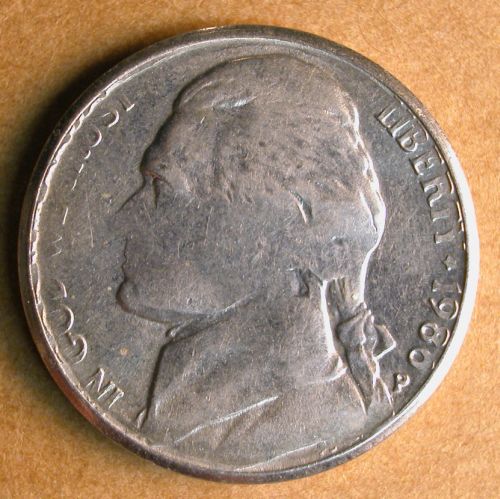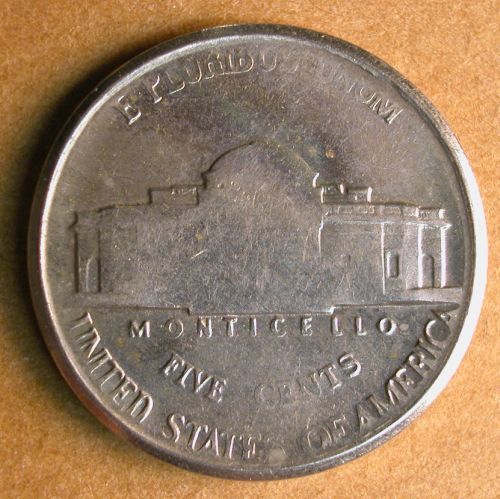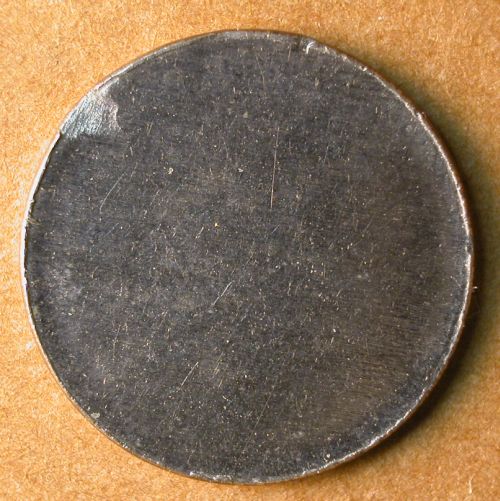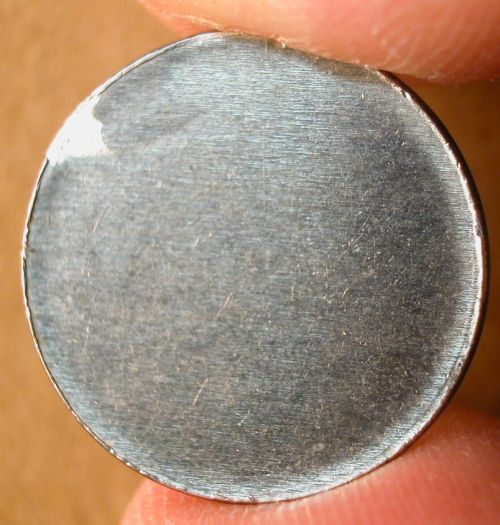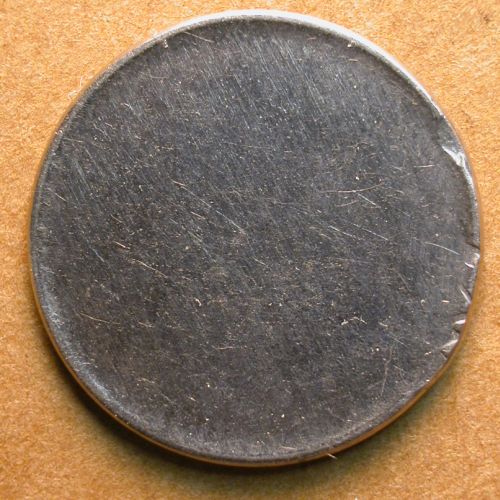Part V. Planchet Errors:
Pristine Planchets
Definition: A planchet that lacks the usual tumbling marks and instead has a surface free of imperfections. Faint roller marks are often present.
A blank (and later on, a planchet) goes through a rough-and-tumble existence as it travels toward the striking chamber. It picks up small nicks and dings (tumbling marks) as it jostles against equipment and other planchets. Tumbling marks are picked up as planchets travel along conveyors and are dropped into hoppers and tote bins. Tumbling marks are even more likely to be inflicted as planchets bounce around in the rotating annealing oven. Additional hazards await within the rotating, perforated cylinders that spin blanks and planchets through a quench tank, a chemical rinse bath, and a dryer.
Tumbling marks are eventually erased during a normal strike. But they will persist in the case of off-center strikes and weak strikes.
Off-center strikes and weak strikes that lack tumbling marks present a conundrum. There are several possibilities (not necessarily mutually exclusive):
- The planchet was just lucky.
- The planchet skipped the annealing oven. The annealing oven appears to be the apparatus most likely to bang up a planchet. Also, a non-annealed planchet is work-hardened, and resists damage.
- The planchet was abnormally hard as the result of a problem with the alloy.
- The planchet was prepared for a special purpose.
The design of this 1986-P nickel did not strike up completely. The incomplete strike appears to be the result of an abnormally hard planchet rather than a weak strike. Unstruck areas are devoid of tumbling marks and instead show fine roller marks. I suspect this planchet bypassed the annealing oven.
This dime received and exceedingly weak, 70% off-center strike. Design elements are almost completely restricted to the planchet’s proto-rim. Obverse elements consist of Roosevelt’s lower lip, chin, throat, and the back of his neck. Reverse elements consist of part of the torch’s flame, and two olive leaves. The planchet is devoid of tumbling marks and instead has a bright, smooth surface covered by fine roller marks.
This may be a specially prepared planchet, although it’s not a proof. The planchet shows an unusual pattern of upset. The proto-rim is unusually sharp and narrow, while the edge is gently convex instead of trapezoidal in vertical cross section.
